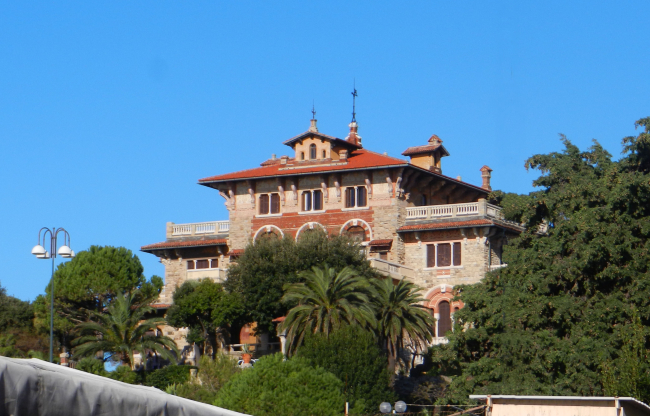Albaro and surroundings (Sturla, Borgoratti, San Martino)
Albaro is the residential area located above the area of Corso Italia and Boccadasse.
From the 16th century it was enriched with marvelous villas by the will of the governors of the Republic of Genoa, who contributed to fill it with luxuriant and well-manicured gardens and parks.
There are many historical villas in the area, like the Saluzzo-Bombrini, also known as “il Paradiso”, or villa Saluzzo-Mongiardino, where George Byron lived for a couple of months, or villa Bagnarello, residence of the genoese stay of another famous artist: Charles Dickens.
Among the other best preserved illustrious residences, we must also name villa Giustiniani-Cambiaso, with its large park, nowadays converted into the headquarters of the University of Genoa, and villa Sauli Bombrini Doria, where the Conservatorio Niccolò Paganini now resides.
In Albaro we can also find the impressive liberty stairwell named after Giorgio Borghese, which leads to a belvedere located over the sea with a fascinating view over the east side of the city of Genoa.
Among the many religious buildings and buildings of artistic interest in the area, there are the Chiesa dei Santi Nazario e Celso and the Chiesa di San Francesco d’Albaro, built in 1324; and the Romanesque Gothic church dedicated to Maria del Prato, which dates back to 1172 and was built thanks to the funds given by rich Genoese families.
To the east, you will find the areas of Sturla, Borgoratti and San Martino.
The area of Sturla is crossed by the torrent that carries its name and flows into the gulf. It was once a fishermen village, but today here you can find resortsand equipped areas for sports. Instead Borgoratti used to be a farmers village. The Genoese poet Giorgio Caproni wrote a poem dedicated to Borgoratti, which is included in the volume “Come un’allegoria”, published in 1936.
In this area of the city is located the San Martino Hospital, one of the biggest medical centres in Europe, a city within the city with more than five thousand employees and 35 hectares of land.
Built in 1907, this hospital is an important centre for cancer research and it is the headquarters of the Faculty of Medicine.

